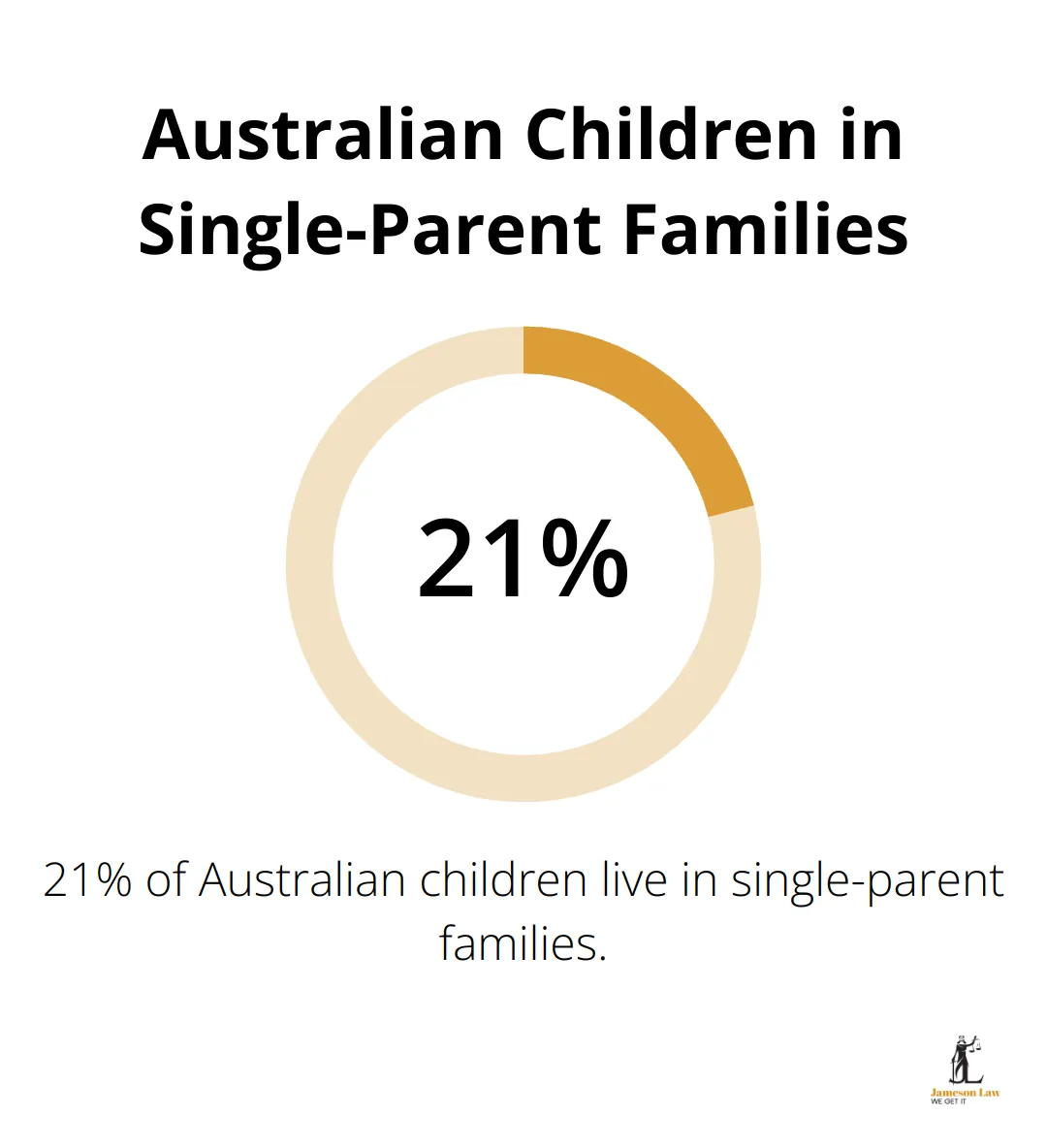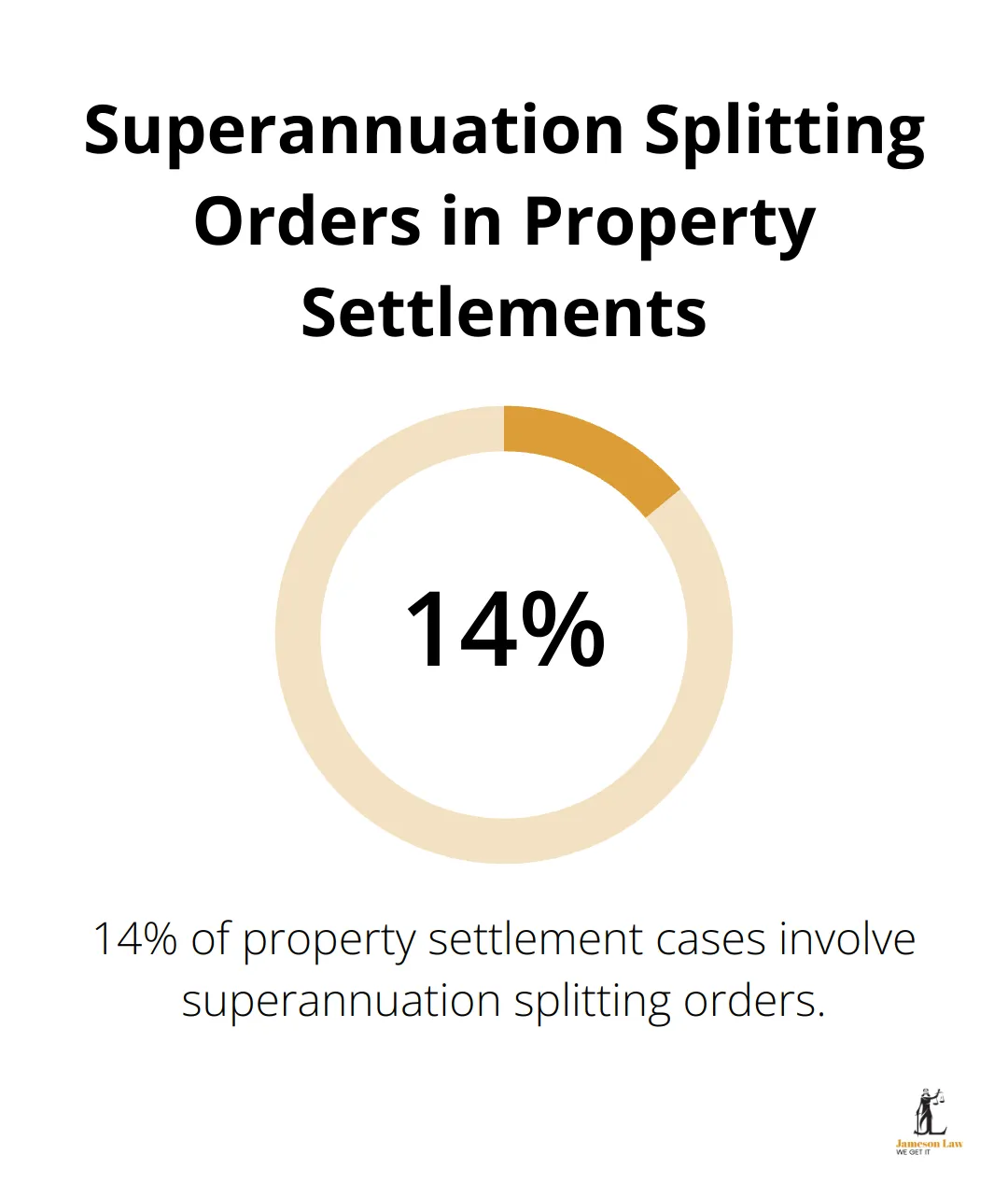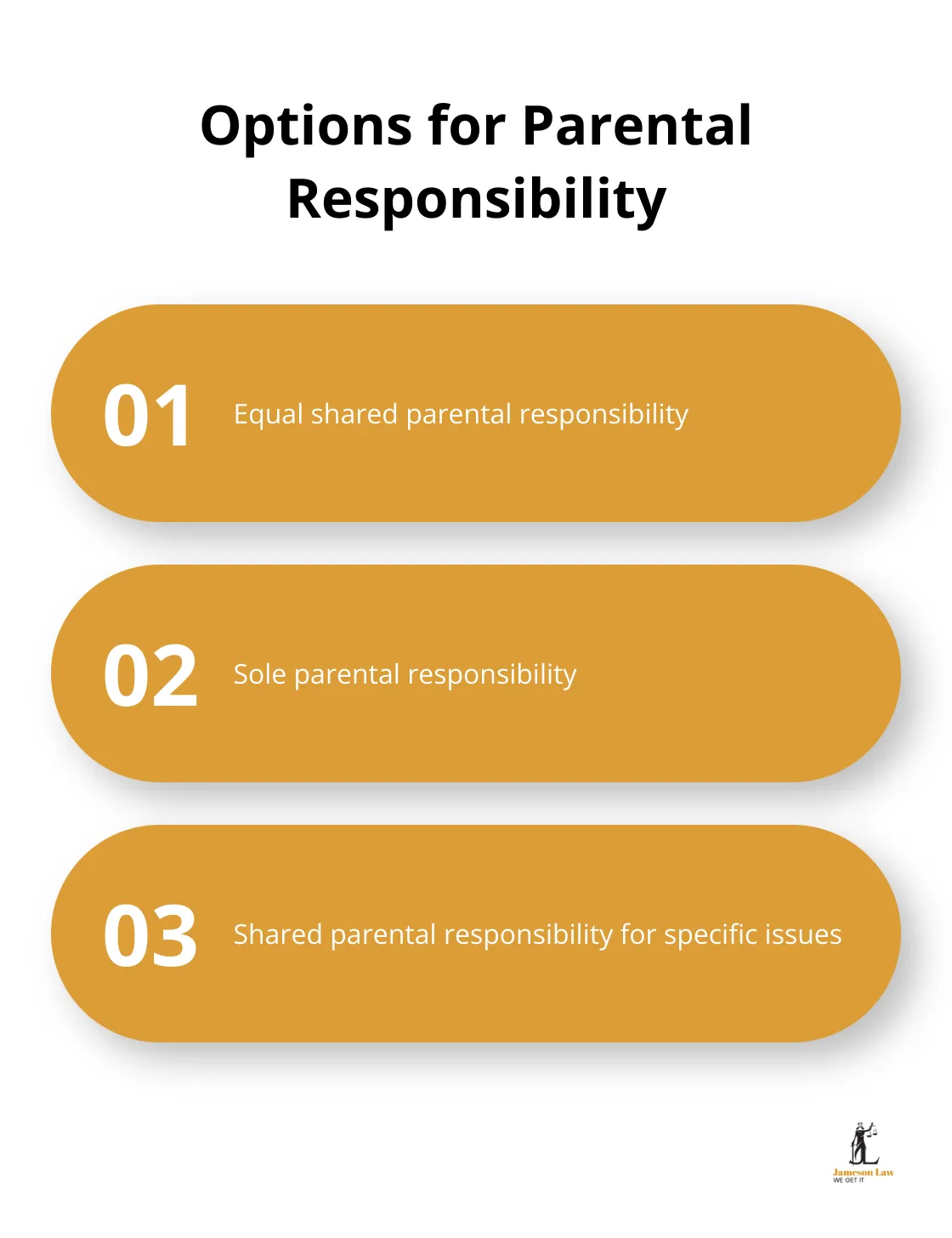The Family Law Act (Cth) 1975 is a cornerstone of Australian family law, shaping how we handle divorce, property settlements, and child-related matters. At Jameson Law, we often see how this legislation impacts families across the country.
This blog post breaks down the key provisions of the Act, explaining their significance and practical applications. We’ll explore property settlements, parenting arrangements, and child support, helping you understand your rights and obligations under this important law.
How Has the Family Law Act 1975 Shaped Australian Family Law?
The Family Law Act 1975 revolutionised Australian family law when it was introduced. It replaced the old fault-based divorce system with a no-fault divorce system, which made it easier for couples to end their marriages without proving wrongdoing. This change alone had a massive impact on Australian families, as it reduced the adversarial nature of divorce proceedings.
Jurisdiction and Application
The Act applies to all states and territories in Australia (except Western Australia, which has its own Family Court). It covers marriage, divorce, parenting arrangements, property division, and other family law matters. Since 2009, it also covers de facto relationships, including same-sex couples.
The Australian Institute of Family Studies reports that about 21% of Australian children now live in single-parent families. This statistic underscores the importance of the Act in regulating post-separation parenting arrangements.

Key Amendments Since 1975
The Family Law Act has undergone numerous amendments since its inception. Some of the most significant changes include:
- The 1995 amendments introduced the concept of shared parental responsibility, which emphasised the child’s right to know and be cared for by both parents.
- In 2006, the Act encouraged shared parenting arrangements. However, this approach later received criticism for potentially putting children at risk in cases involving family violence.
- The 2011 amendments expanded the definition of family violence to include emotional and financial abuse, which reflected a growing understanding of domestic violence’s complexities.
- Most recently, the 2023 amendments removed the presumption of equal shared parental responsibility, which prioritised child safety over equal parental rights.
These changes have significantly affected Australian families. For example, the 2023 amendments have led to a shift in how courts approach parenting orders, with a stronger focus on the child’s best interests and safety.
Impact on Australian Families
The Family Law Act’s evolution has profoundly impacted how Australian families navigate separation and divorce. The Australian Bureau of Statistics reports that in 2021, courts granted 49,510 divorces in Australia. This figure represents a decrease from previous years, possibly due to the Act’s emphasis on alternative dispute resolution methods.
Moreover, the Act’s recognition of de facto relationships has provided legal protections for a growing number of Australians. As of 2021, about 16% of couples in Australia were in de facto relationships (according to the ABS).
Understanding the Family Law Act is essential for anyone dealing with family law issues in Australia. Its provisions shape everything from how property is divided after a separation to how decisions about children’s care are made.
Property Settlement under the Family Law Act
The Act’s provisions for property settlement form a significant part of its impact on Australian families. These provisions (which we’ll explore in more detail in the next section) provide a framework for fair division of assets and liabilities after a relationship breakdown.
How Does the Family Law Act Handle Property Settlements?
The Family Law Act 1975 provides a comprehensive framework for property settlements after a relationship breakdown. Section 79 of the Act empowers courts to alter property interests between parties to achieve a just and equitable outcome.
The Four-Step Process for Property Division
Australian family courts typically follow a four-step process when they determine property settlements:
- Identify and value the asset pool
- Assess the contributions of each party
- Consider future needs
- Ensure the outcome is just and equitable
This process isn’t explicitly outlined in the Act but has developed through case law. It provides a structured approach to what can be a complex and emotionally charged process.
Factors the Court Considers
When courts make property orders, they consider a wide range of factors. These include:
- Financial contributions: This includes income, savings, and property brought into the relationship.
- Non-financial contributions: Courts recognise contributions such as homemaking and caring for children.
- Future needs: Factors like age, health, income earning capacity, and care of children influence decisions.
- Length of the relationship: Longer relationships often result in a more equal division of assets.
- Domestic violence: The Family Law Amendment Act 2024 explicitly requires courts to consider the impact of family violence on contributions and future needs.
Recent Trends in Property Settlements
The treatment of superannuation in property settlements has also evolved. As of 2021, superannuation splitting orders occurred in about 14% of cases, reflecting the growing recognition of super as a significant asset.

Practical Tips for Property Settlements
- Full financial disclosure is essential. Hiding assets can lead to severe penalties and may result in the court making an unfavourable order.
- Consider mediation or collaborative law approaches. These can cost less and cause less stress than going to court.
- Try to be realistic about outcomes. The court aims for fairness, not necessarily equality.
- Seek early legal advice. Understanding your rights and obligations can help you make informed decisions throughout the process.
Proper preparation and understanding of the law can lead to better outcomes in property settlements. A skilled legal team (like Jameson Law) can guide you through this complex process, ensuring your interests receive protection while working towards a fair resolution.
As we move forward, it’s important to understand how the Family Law Act addresses another critical aspect of family breakdowns: parenting arrangements and child support. These provisions significantly impact the lives of children and parents alike.
How Does the Family Law Act Protect Children?
The Family Law Act 1975 places the best interests of children at the centre of all parenting decisions. This principle guides courts, parents, and legal professionals in determining custody arrangements and child support.
The Best Interests of the Child
The Act outlines specific factors courts must consider when determining a child’s best interests:
- The benefit of the child having a meaningful relationship with both parents
- The need to protect the child from physical or psychological harm
- The child’s views (considering their maturity and understanding)
- The child’s relationship with each parent and other significant people
- The likely effect of changes in the child’s circumstances
Courts prioritise a child’s safety and well-being over other considerations. In cases involving family violence, the court may limit or supervise contact with an abusive parent to ensure the child’s safety.
Parental Responsibility and Decision-Making
The Family Law Act defines parental responsibility as all duties, powers, responsibilities and authority which, by law, parents have in relation to children. This includes decisions about a child’s education, health care, and religious upbringing.
Recent amendments to the Act have removed the presumption of equal shared parental responsibility. This change allows courts more flexibility in determining parenting arrangements that truly serve the child’s best interests.
Parents now have three options for parental responsibility:
- Equal shared parental responsibility
- Sole parental responsibility
- Shared parental responsibility for specific issues

These changes reflect a growing understanding that one-size-fits-all approaches often fail to meet children’s individual needs.
Child Support Assessment and Collection
The Child Support (Assessment) Act 1989 works alongside the Family Law Act to ensure children receive financial support from both parents after separation. The Department of Human Services manages child support assessments and collections.
The child support formula considers several factors:
- Both parents’ incomes
- The percentage of care each parent provides
- The costs of raising children (which increase with age)
- The number of children involved
Parents can arrange child support privately or through the Child Support Agency. Private arrangements offer flexibility but may lack enforceability. Agency-managed arrangements provide more security but less flexibility.
It is commonly recognized that both parents have a financial obligation to contribute towards the cost of raising their child.
Legal Support for Child-Related Matters
Understanding these provisions of the Family Law Act is important for parents navigating separation. They provide a framework for ensuring children’s needs remain the top priority during what can be a challenging time for families.
For expert guidance on child-related matters under the Family Law Act, consider seeking professional legal advice. Jameson Law (with over 40 years of combined experience) can provide tailored support to help you navigate these complex issues and achieve the best outcomes for your children.
Final Thoughts
The Family Law Act (Cth) 1975 shapes Australian family law and impacts countless families. This legislation guides people through challenging moments, from property settlements to parenting arrangements and child support. The Act provides a framework to resolve family disputes fairly and equitably.
Recent amendments to the Act reflect an ongoing commitment to adapt the law to meet evolving family needs. These changes, particularly those concerning parental responsibility and property settlements, demonstrate the Act’s responsiveness to societal shifts. The complexity of family law matters often requires expert guidance to navigate effectively.
Jameson Law offers tailored legal support across a wide range of family law issues. Our team understands that each family’s situation is unique and strives to provide personalized solutions (aligned with the specific needs of our clients). We can help you understand your rights and obligations under the Family Law Act (Cth) 1975 to achieve a fair resolution.








